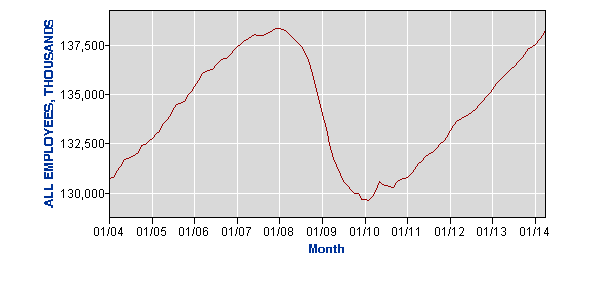Nial Gooding
Wednesday, June 4th 2014
Preamble
The Wall Street – Main Street disconnect that’s been a leitmotiv of the US economic recovery is perplexing. Why, when everything is improving, is Main Street still so down in the dumps? The answer is important as a lack of grass-roots confidence in the US has retarded re-engagement of a capex cycle and is holding back consumption; the latter of course mattering very much for China’s export manufacturing complex.
I think it’s only a matter of time before Main Street’s frown turns upside down and one of the keys to this sentimental shift will be what’s about to happen in the US labor market.
Recovery? What Recovery!
Main Street has been hearing about economic recovery since 2009 when most key indicators bottomed and from where things started to mend. The term ‘recovery’ means something quite different for market folk though compared to most in the real world. If you take something away from somebody (more on this below) and then give it back, why should they feel grateful? That’s the more widely understood definition of ‘recovery’; you go back to where you started. Whoopie doo.
Moreover, a look here at US hourly wage rates highlights, although wage rates have risen over the period and are now at record highs, they’ve merely run a neck and neck race with inflation.
Period Ending – U$/Hour
4/2007 20.83
4/2008 21.42
4/2009 22.11
4/2010 22.50
4/2011 22.93
4/2012 23.40
4/2013 23.86
4/2014 24.31
Source: United States Department of Labor
The cumulative 7-year gain is 16.7% but when expressed as a CAGR it comes out at a measly 2.23% per annum. Inflation over the period has been a cumulative 15.4% or a CAGR of 2.07% so even if you kept your job, in real terms, for the last seven years you’ve practically stood still.
But Many Didn’t Keep Their Jobs
To return to the point above about being returned what was yours in the first place this chart shows the total number of Americans with jobs from 2004.
Source: United States Department of Labor
At the crest in January 2008 there were 138.4m wage earners in America (the real number is higher if you use the Household Survey which includes self-employed). The Great Recession caused the loss of 8.7m jobs and the series troughed in January 2010 when only 129.7m salaries were being collected.
The main point is that if you had a job and lost it you’ll feel bad. When you get it back though it doesn’t mean you’re going to feel that much better. You’re just back where you started; and with sucky compensation (as we’ve seen above) to boot!
Now Something Wonderful is About to Happen
Provisional data (it’s always provisional for the previous two months) for April this year reported 138.3m wage earners, a whisker off the January 2008 all-time high. Given the momentum in this series I’m prepared to predict, either this month or next for sure, a new high for the series. America will soon therefore have more warm bodies collecting first world pay packets than at any time in its history.
I’m not an economist but simple intuition tells me that with the slack finally out of the labor market the scene is now set for some wage inflation? The mystery of why hourly earnings have been so sluggish is no mystery at all. For those with labor for sale they’ve been offering into a buyers’ market for years; but the boot may be about to shift to the other foot.
In Conclusion
Greater consumer confidence and a broadening of feel-good from Wall Street to Main Street in the US would produce multiple benefits for the US and the world. The direct impact of more wages in the system and higher wage rates in the US should be higher consumption patterns and supplier economies, of whom China is preeminent, should be prepared for a possible step change in the flow of demand-related good news.
Friday’s US Department of Labor release therefore, always useful, should this month be a little more interesting than usual.
